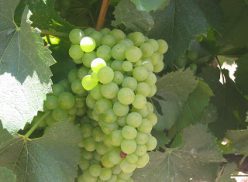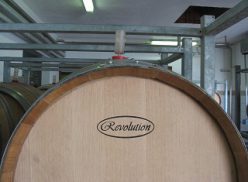
Chardonnay.
In spite of the fact that Chardonnay grapes do not have an outspoken aroma and taste, it is the most planted international white grape and also made in different styles. Apart from being citrus-like, unwooded or creamy wooded, it is also associated with Blanc de Blanc bottle-fermented sparkling wines. Different production practices mainly determine the difference between the different styles.
Chardonnay is the most important white grape cultivar in Australia and in 2015 it was almost a quarter of all harvested grapes. 94% of the Chardonnay sold in Australia is in the ultra-premium (AUS$ 25 – 50) and super-premium (AUS$ 15 – 24) price segments. A project was initiated in 2013 to investigate the influence of production practices on Chardonnay wines and about 10% of all Chardonnay producers participated.
Different practices were compared in the project:
Ripeness degree of the grapes
The sugar concentration and berry tasting are mostly used to determine the harvest date. Total acid concentration, pH and weather forecasts are the other methods which are second most used. The berry tasting is executed in the vineyard and flavour intensity, seed colour, phenolic ripeness and skin structure are the parameters which are evaluated.
Allocation of grapes according to price segments of wine
Historical allocations, the results of berry tasting, wine style quotas, sugar and acid concentrations are the indicators that are mostly used for allocation purposes, although some producers only do the allocations of the final wines.
Nitrogen management during alcoholic fermentation
Sluggish or stuck fermentations can cause flavours and microbiological instability, which can have a considerable effect on the wine quality. The easiest way to prevent this is to ensure sufficient nitrogen availability in the juice (140 mg/ℓ YAN prior to fermentation in juice with an average sugar concentration). Although most producers do not do nitrogen analyses prior to fermentation, nitrogen supplements are made to prevent fermentation problems. Diammoniumphosphate (DAP) is the most popular source of supplement. Nitrogen deficiencies or surpluses have, however, different results. Too little nitrogen limits ester formation, while surplus nitrogen concentrations can promote ethylacetate, acetic acid and higher alcohol formation.
Yeast strains and spontaneous fermentations
The chosen yeast strain has a decisive influence on the aroma profile and consequently the quality and style of the wine. The majority of icon wines (>AUS$ 50) results from spontaneous fermentation. Other than yeast strains which are associated with pure culture yeast, spontaneous fermentations are executed by non-Saccharomyces and indigenous Saccharomyces yeast strains. Spontaneous fermentations result in more complex wines, but the composition of the spontaneous population can also vary annually. Barrel-fermented Chardonnay wines are, however, mostly fermented with commercial yeast strains. The most popular commercial strains are CY 3079, QA 23, EC 118 and Enoferm ICV D47. These strains have different profiles. CY 3079 is better for barrel-fermented Chardonnay, which mature sur lie and QA 23 is preferred for lighter, fruitier styles. Saccharomyces cerevisiae yeast strains are still mainly used, although 18% of the respondents use Saccharomyces bayanus or other non-traditional yeast strains. Products like Prelude, Zymaflor Alpha, AWRI 1053 and Anchor Exotics are used for that.

Barrel fermentation.
Malolactic fermentation (MLF) and the use of wood
Icon and ultra-premium wines are almost exclusively fermented in barrels and the majority are also matured in barrels; contrary a low percentage of the popular and basic wines are fermented in barrels. A very low percentage of the more expensive wines are made without any wood contact or alternative wood products. There is consequently a direct relation between the use of wood and the price of wine. More than 80% of producers also prefer French oak above other wood origins and the same majority also prefer medium toasted barrels. A few producers prefer heavy toasted barrels. Wines frequently undergo MLF, especially if they were fermented or matured in barrels.
Australian Chardonnay styles
A considerable style variation is apparent, which can correspond with any other wine country. The basic difference is wood or fruit driven wines and it appears as if the popularity of the latter is increasing. Chardonnay wines also settle mainly in the higher price segments (Gambetta et al., 2016).
Reference
Gambetta, Joanne, Bastian, Sue & Jeffery, David, 2016. Snapshot of Australian production practices for Chardonnay wines. Wine & Viticulture Journal, September/October 2016: 27 – 32.













